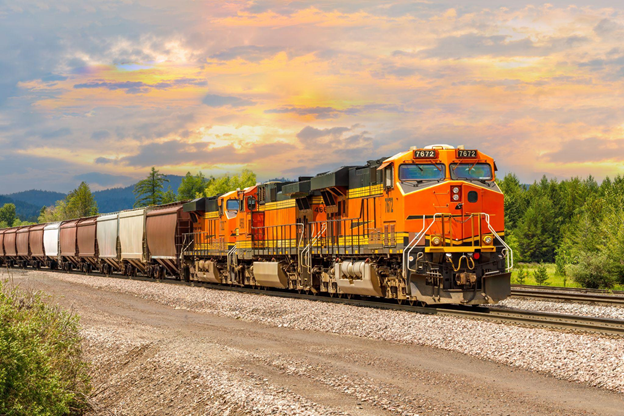
Freight rail remains a critical backbone of North America’s supply chain, moving billions of tons of goods across the continent each year. From grain and automotive parts to consumer goods and energy resources, railroads connect producers to markets in ways that are both cost-effective and environmentally responsible. Yet, like any vital industry, freight rail is in the midst of significant changes. Supply chain complexities, shifting market demands, and heightened expectations around sustainability are all shaping an evolving landscape.
The stakes are high. As e-commerce continues to grow and the demand for faster, more flexible deliveries rises, freight rail must navigate a dynamic set of challenges. Analyzing these challenges—and developing actionable solutions to overcome them—helps ensure the sector’s continued resilience and future growth. Below, we’ll explore these hurdles and outline strategic approaches that can help freight rail operators stay competitive.
Major Challenges Facing Freight Rail Operators
Infrastructure Investment
One of the most pressing challenges revolves around infrastructure. North America’s rail network, comprising thousands of miles of track, bridges, and rail yards, underpins economic growth but is often in need of significant upgrades. Many of these assets date back decades, and while they have stood the test of time, mounting freight volumes and heavier loads demand continuous improvements.
Funding constraints further complicate the issue. In many regions, infrastructure investment comes from a combination of public and private sources, but rail often competes with other transportation modes—such as highways and air travel—for limited government funds. The result is a balancing act: ensuring that rail infrastructure remains robust while operating within tight budgetary conditions.
Technology Integration
Technology is both a boon and a challenge for freight rail. On one hand, advanced systems like Positive Train Control (PTC) have significantly improved safety by reducing human error, and predictive maintenance solutions have cut down on unplanned downtime by identifying potential issues before they become major problems. On the other hand, implementing these innovations requires significant capital and a specialized workforce.
Adopting Internet of Things (IoT) sensors, artificial intelligence (AI), and big data analytics can help rail operators fine-tune operations and run leaner, more efficient fleets. However, such overhauls can meet internal resistance. Established workflows and legacy systems may clash with the rapid pace of technological change, and training existing staff to manage these advanced solutions remains an ongoing challenge.
Regulatory Pressures
Safety and environmental regulations play a vital role in shaping the freight rail sector. Compliance helps ensure worker safety, reduces emissions, and maintains public trust. Still, new mandates—ranging from stricter emissions limits to more stringent safety protocols—can increase operating costs and complexity.
Navigating the interplay of federal and state regulations adds another layer to this challenge. Meeting compliance obligations across multiple jurisdictions can be time-consuming, especially when balancing efficient operations with the costs of upgrading equipment or implementing new processes. Yet, freight rail has historically found ways to work closely with regulatory bodies, often advocating for solutions that strike a balance between growth and compliance.
Workforce Challenges
In addition to infrastructure and technology, the rail industry faces the daunting task of attracting and retaining a skilled workforce. As many experienced rail professionals approach retirement, transferring critical knowledge to the next generation becomes a race against the clock. Meanwhile, younger workers often gravitate toward other transportation sectors—like trucking—or pursue careers in tech.
The industry competes against other fields that may offer more flexible work arrangements or cutting-edge work environments. Offering competitive compensation, modern training programs, and clear career paths will be essential to building a robust pipeline of skilled workers to keep rail operations running efficiently.
Strategies to Overcome These Challenges
Prioritizing Infrastructure Investment
Collaborative partnerships—especially those involving public-private agreements—are emerging as a viable path to address infrastructure needs. By teaming up with government agencies, freight rail operators can spread the financial burden and secure the long-term viability of track, bridges, and intermodal terminals.
Targeted investments can focus on high-traffic corridors, where improved rail lines and expanded terminal capacity can yield maximum impact. Upgrading intermodal terminals also enhances the efficiency of transferring goods between different modes of transportation, a key factor in keeping the supply chain fluid.
Case example: In some regions, successful public-private partnerships have revitalized aging corridors by installing new rails, upgrading signal systems, and expanding loading facilities. This not only boosts capacity but also spurs local economic development through job creation and improved connectivity.
Leveraging Technology for Operational Efficiency
Technological innovations can offer transformative gains in safety, cost savings, and service reliability. Predictive analytics, for instance, can detect minor anomalies in rail components before they escalate into costly breakdowns or safety hazards. When sensors relay real-time data on track conditions and rolling stock health, maintenance becomes less reactive and more strategic.
Beyond maintenance, leveraging AI-driven scheduling software allows for optimized routing, cutting down on congestion and reducing idle time. Autonomous or semi-autonomous rail technology—though still in its early stages—shows promise in further improving efficiency and safety.
Case example: Several major freight rail operators have already started implementing AI-powered systems that track railcar location, monitor mechanical health, and even forecast demand spikes. As a result, they’ve seen fewer unexpected service interruptions and a more balanced workload for maintenance teams.
Navigating Regulatory Compliance
While regulations can be stringent, forward-thinking rail operators recognize that compliance can go hand-in-hand with innovation. Engaging with policymakers early in the legislative process can help shape rail-friendly regulations that both protect public interests and encourage industry growth.
Investing in cleaner, more energy-efficient locomotives not only meets environmental standards but also reduces fuel costs over time. Embracing electrification in some corridors, exploring hybrid engines, or upgrading to cleaner diesel engines can significantly cut emissions.
Case example: A number of railroads have introduced new locomotive fleets that significantly reduce nitrogen oxide (NOx) and particulate matter emissions. These efforts demonstrate that meeting emission standards can also yield long-term economic advantages through lower fuel consumption and maintenance costs.
Workforce Development Programs
To resolve the looming talent shortage, freight rail operators must ramp up their efforts in education and training. Apprenticeship programs, developed in partnership with technical colleges and trade schools, can provide a steady pipeline of skilled workers. Through these programs, students gain real-world experience while earning credentials that prepare them for long-term rail careers.
Competitive compensation, robust benefits, and career development pathways will help attract younger workers who are otherwise considering technology or trucking. Additionally, emphasizing the modern, tech-driven aspects of rail operations—such as big data analytics or drone-based track inspections—can appeal to a new generation of digital natives.
Future Outlook: Building Resilience in Freight Rail
The challenges facing freight rail—aging infrastructure, technology integration, regulatory pressures, and workforce development—are significant, but not insurmountable. By proactively investing in robust infrastructure, embracing cutting-edge technologies, engaging constructively with regulators, and developing strong workforce programs, the industry can position itself to flourish in a rapidly changing marketplace.
Looking ahead, opportunities abound. Sustainable operations and cost-effective shipping make rail an attractive mode of transport for an increasing range of goods. Collaboration with government agencies and the private sector, along with strategic innovations, can help freight rail maintain its pivotal role in the North American economy.
Call to action: Stakeholders across the supply chain—rail operators, shippers, investors, regulators, and educational institutions—must work in concert to craft effective strategies and keep rail relevant and robust. By investing in the future of freight rail today, we can ensure that it continues to be the backbone of commerce for decades to come.
Charting a Path Forward for Freight Rail
By expanding on each section of your outline, this framework provides a comprehensive look at the current and future state of freight rail in North America. Whether you aim for a short blog post or a more in-depth whitepaper, these expanded sections offer plenty of material to build out a compelling narrative and engage readers interested in the freight rail industry.






